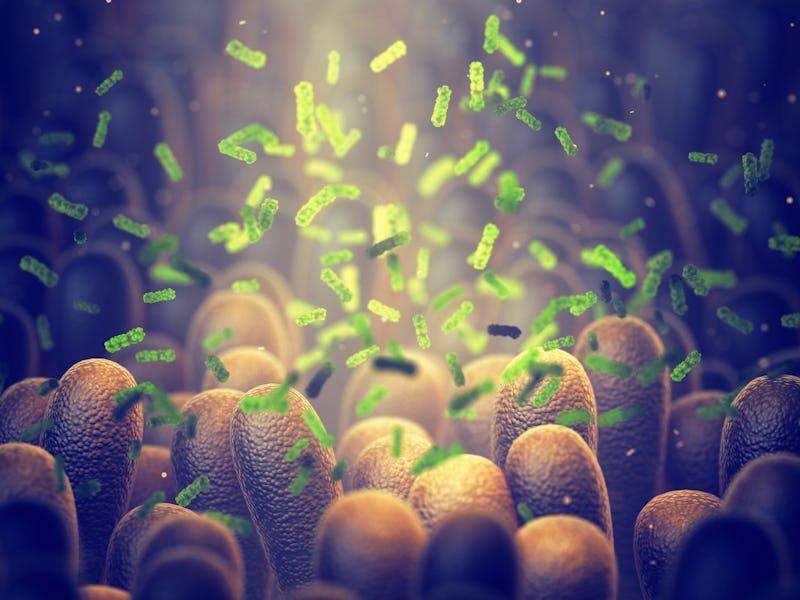A “mind-blowing” discovery: Age reversal in the brain may happen
Plus: Young, hot-headed stars of a different sort.

To make your brain younger, how far would you go? What if, instead of your brain getting older and slower as you age, you could undergo a transplant to make that gray matter appear more like the brains of the youths?
What if it required a strange, sort of gross transplant from a young person?
Curious? Keep scrolling to read more in this edition of Inverse Daily.
I am Nick Lucchesi, editor-in-chief at Inverse. Let’s dive in.
This is an adapted version of the Inverse Daily newsletter for Thursday, August 12, 2021. Subscribe for free and earn rewards for reading every day in your inbox. ✉️
A “mind-blowing” finding about age reversal — Elana Spivack interviews researchers who demonstrated in a mouse model that when older mice had the gut microbiota of younger mice, they displayed behavioral qualities of younger mice, too:
To stave off the effects of aging, one might use retinol creams or play Sudoku.
But maybe we should be focusing on something different altogether.
For the past two decades, scientists have known the metropolis home to trillions of bacteria in your belly — the gut microbiome — is also central to mental health, the immune system, and more.
One of the latest studies in gut health scrutinizes how our microbiome affects aging in mice using a surprising transplant.
Go deeper:
- Ancient ice filled with viruses may reveal the future of Earth’s microbiome
- How fasting changes your gut microbiome
- What ancient feces can tell us about our modern diet
Is cycling better than running? — Sophie Putka offers this end-of-summer explainer on how cycling compares to other forms of cardio:
Imagine a leisurely bike ride through the park on your way home from work. Now picture a run on a treadmill, sweat dripping down your neck as you swig from a water bottle. Surely, one of these two activities must be “better” for your health.
Not so fast. When we compare the exercises we engage in, including cardio, there’s a lot to consider. Cycling has also emerged more definitively as a way to reduce the risk of mortality and avoid heart disease, among other benefits — but is it really as good as other forms of exercise?
Under the same conditions, one form of cardio might burn more calories than another. But humans don’t exercise in labs, and our physical outcomes may vary depending on how long we choose to exercise, how often, and with what intensity. More than that, there are benefits to cycling that can’t be measured as easily.
Go deeper:
- Scientists say this invisible exercise counts more than your workout
- This low-impact exercise may be the best for brain health
- One type of exercise reliably lowers your risk of death, scientists say
Violent outbursts of boiling hot gas from young red dwarf stars could potentially evaporate the atmosphere of a planet.
Young, hot-headed stars — Passant Rabie reports that flares erupting from young, hot stars may not be as harmful to their orbiting exoplanets:
Young, hot stars are often underestimated. In the search for life in the cosmos, astronomers have previously disregarded red dwarf stars as having inhospitable star systems whereby none of their orbiting exoplanets could possibly host life.
But a new study suggests superflares — or extreme radiation bursts from young, small stars — pose little threat to the orbiting planets, therefore increasing the potential for their habitability.
Go deeper:
- Look: Astronomers clearly capture planets and moons forming in deep space
- What will happen after Earth is destroyed by the Sun? A possibility for new life
- Habitable planet and more: 4 takeaways from groundbreaking space study
Two chimps initiating a social grooming activity.
Watch: An extremely human behavior observed in animals — Bonobos and chimpanzees greet each other before social interactions just like humans do. Jenn Walter reports on a study that sheds light on our shared evolution:
How do you start and end a conversation? With a greeting, of course — be it a handshake, saying hello or goodbye, a hug, nodding, bowing, or waving. Greetings are intrinsically human no matter where you’re from. Scientists previously thought this collective social behavior was also unique to humans.
Related stories:
- Why do animals play? Science explains a longstanding mystery
- Part-human, part-monkey: welcome science's newest chimera embryos
- Is Neuralink's monkey Pong video the future? Or something else?
Lakeith Stanfield marks his 30th birthday today. HBD!
- About the newsletter: Do you think it can be improved? Have a story idea? Want to share a story about the time you met an astronaut? Send those thoughts and more to newsletter@inverse.com.
- Science Song of the Day: “Small Fish” by Righteous Jams.
- Follow me on Twitter at @nicklucchesi, if for no other reason than to get Inverse headlines in your timeline and a few other Inverse-y things.
- Before we go: Sir Mix-A-Lot (58), George Soros (91), Pete Sampras (50), Tyson Fury (33), and Lakeith Stanfield (30; pictured above) all mark a birthday today. (Source: AP Planner)
A technical note — To ensure your email open is counted toward our streak program, confirm that all the images have loaded and your ad blocker is turned off.